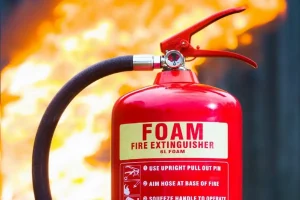 As 2024 unfolds, it’s clear that workplace health and safety continues to adapt and evolve in response to new challenges and insights. Reflecting on the past year, here are three key lessons for businesses aiming to maintain a safe and supportive work environment.
As 2024 unfolds, it’s clear that workplace health and safety continues to adapt and evolve in response to new challenges and insights. Reflecting on the past year, here are three key lessons for businesses aiming to maintain a safe and supportive work environment.
1. Mental Health is Integral to Workplace Safety
The emphasis on mental health has been a defining shift in 2024. Many companies have come to understand that employee well-being goes beyond physical safety; mental health plays a huge role in overall job performance, resilience, and workplace harmony. Offering mental health support programs, promoting work-life balance, and creating open communication channels for employees to voice their concerns are all essential steps forward.
2. Technology is a Game-Changer in Risk Management
With the advancement of wearable tech, IoT sensors, and AI-driven analytics, companies are now able to monitor and respond to safety risks in real time. From tracking potential hazards to predicting equipment failures, technology has transformed how businesses manage workplace safety, making it possible to prevent incidents rather than just respond to them.
3. Safety Cultures Need Engagement, Not Just Policies
One of the standout insights from 2024 is that creating a culture of safety requires more than just policies. Companies that actively engage employees in safety conversations, encourage reporting of hazards, and provide continuous training are seeing more buy-in and better safety outcomes. Building a culture where everyone feels responsible for safety fosters a safer and more cohesive work environment.
Looking Ahead
2024 has reinforced the need for a holistic approach to workplace safety, one that encompasses mental health, leverages modern technology, and engages employees at all levels. By applying these lessons, companies can continue building safer, healthier workplaces well into the future.
Contact us for further information.
 As we approach the holiday season, the excitement of Christmas festivities fills the air. It’s a time for joy, celebration, and reflection. But amid the cheer, it’s also crucial to stay safe—whether at work, at home, or out enjoying the season.
As we approach the holiday season, the excitement of Christmas festivities fills the air. It’s a time for joy, celebration, and reflection. But amid the cheer, it’s also crucial to stay safe—whether at work, at home, or out enjoying the season.
The Christmas period often comes with a flurry of activity. Decorations are hung, gifts are exchanged, and celebrations take center stage. However, the busy season can also heighten risks.
Many workplaces see an increase in activity during December, from end-of-year parties to wrapping up tasks before the break. It’s vital to stay alert:
With more people traveling to visit loved ones, roads can be congested and treacherous in winter weather. Drive carefully, keep emergency kits in your car, and never drink and drive.
Fires from candles, overloaded sockets, and mishandled Christmas lights are unfortunately common this time of year. Regularly check your decorations and ensure fire safety protocols are in place.
Be Kind: Creating a Safer Environment for All
The festive period should be a time of goodwill, yet statistics remind us of challenges that persist:
The holidays aren’t joyful for everyone. Loneliness, financial stress, and seasonal affective disorder (SAD) affect many. Be kind and check in with those who may be struggling.
Some typical challenges during the holiday season include:
Stay aware of these pitfalls, and remember it’s okay to set boundaries.
A Message of Hope and Joy
As we wind down the year, let’s focus on what truly matters—being safe, kind, and present. Whether you’re working, traveling, or celebrating at home, take time to care for yourself and others.
Wishing everyone a safe, joyful Christmas and a wonderful start to 2025, filled with kindness, growth, and positivity. Here’s to a fantastic year ahead!
If you need to contact us, click this link!
Preparing for winter
To prepare for inclement weather, a winter plan should be put together with an associated risk assessment. This should be carried out well in advance, and revisited and revised throughout the cold period.
The winter plan will be part of the suite of contingency plans already in place that outline what could happen in worst-case scenarios, and how these risks are mitigated and managed. For example, how would the business fare if power supplies went down?
To make sure everyone understands what is expected of them, and to ensure the plan is as streamlined as possible, it should be completed alongside other areas of the business, eg HR, IT and the communications team.
As part of any planning process, include a review of how the plan fared last year, as well as the year before, so that new approaches can be adopted where processes were less than ideal.
Some areas that could be addressed as part of winter planning are outlined below.
Communication and remote working
Staff need to know what is expected of them when bad weather strikes, as well as what they can expect from the organisation. In some respects, the widespread introduction of remote working following Covid-19 may have improved the organisation’s ability to adapt to short-term consequences of being unable to attend work. Many members of staff will now be set up to work from home, and if hybrid working has been introduced into the organisation, this may help reduce disruption.
However, staff will still need clear policies on what is appropriate, so work with HR to integrate flexible working policies into the winter plan so that employees understand what to do in the event of bad weather or other winter-related disruptions, such as emergency childcare needs.
Facilities staff will need to be familiar with what needs to happen if staff should not come into work and any building closures should be addressed in a consistent manner.
Communicating with staff is key in all these instances, so make sure that the communication plan is clear, approved, and aligned with communication from other departments. Also ensure that managers are on board and understand what is required.
Preventive maintenance
Bad weather and high winds can expose any building flaws, especially in areas such as roofs or windows. Before winter comes, carry out a condition survey to identify any potential problems, and prioritise them for repair.
Similarly, regularly inspect heating systems and any other plant required for emergencies, such as backup generators. Proactive maintenance and regular inspections will help reduce the chance of failure when these bits of kit are most needed. Consider setting additional “winter” KPIs to help track and monitor those tasks that need to be given higher priority during this time.
Ventilation can help to reduce the spread of winter viruses. Options such as opening windows may become less appealing as it turns colder, and so mechanical ventilation will be relied upon. Again, preventive maintenance will help ensure that all systems are functioning well.
Slips and trips
Snow and ice are two obvious winter problems that can be a hindrance to any business. Make sure that supplies of grit are fully stocked, and that weather warnings are regularly checked so that the grit is used when needed. Staff employed to spread grit need proper personal protective equipment (PPE) as well as a map of where to grit, and priority areas. Keep records of where and when gritting takes place and fully train staff.
Do not forget inside the building too — staff bringing snow and ice in on their shoes can create slippery surfaces, so consider adding extra mats at the front doors to help keep the building clean and to absorb any extra wetness.
Also remember that slips and trips are not just isolated to times when snow falls. Darker mornings and evenings can cause more accidents, as can autumnal leaf fall. As part of maintenance checks, ensure external lighting is adequate and that entrances and pathways are kept clear of leaf litter and debris.
Staff working outdoors
As part of the maintenance team there might be people who are regularly working outdoors. Although minimum working temperatures do not apply for these workers, there is, however, still a duty of care to ensure that people are not working in unsafe conditions. This could mean that managers need to look at rotas to avoid staff working outside in the cold for long periods of time, as well as making sure there are adequate facilities for people to warm up and take a break. Additional PPE to account for the weather can also be appropriate, eg having good waterproofs.
Equip fleet vehicles
Make sure fleet vehicles (including grey fleet vehicles) are prepared for wintery conditions. This means making a considered decision as to whether winter tyres are necessary, as well as asking staff to undertake some basic checks on weather and road conditions before deciding to drive. It is also a good idea to put together a car “winter pack”, including a blanket, in-car phone charger and snow shovel. Staff can supplement this with personal items that could include warm clothing and food.
Managing sickness
Along with bad weather comes the dreaded winter flu. Managing sickness will be important. Facilities and Health and Safety managers can play a significant role in reducing the impact of staff illness spreading. For example, by stocking up on soap and alcohol gels and working to promote “hands, face, space” messaging and other good behaviours to reduce the spread infections.
Furthermore, don’t forget that winter doesn’t always mean catching a cold. For some, it can also bring about the onset of Seasonal Affective Disorder (SAD) as well as a propensity for less exercise and a change in diet. The onset of winter can make any pre-existing mental health conditions worse. Keep this in mind; perhaps renew or re-launch any wellness campaigns or promote any mental
support that is offered by the business.
Summary
In short, plan ahead. Make sure that a winter plan is in place, any maintenance is carried out and that the business is ready should the worst happen. If bad weather does strike, then remember to review how it went afterwards and implement any changes that might be necessary.
Contact us if you require further information.
 In today’s fast-evolving workplace, conducting regular health and safety audits has become more important than ever. Companies are operating in dynamic environments with ever-changing regulations, technological advancements, and new health risks. Here’s why regular audits are essential for maintaining a safe and compliant workplace in 2024:
In today’s fast-evolving workplace, conducting regular health and safety audits has become more important than ever. Companies are operating in dynamic environments with ever-changing regulations, technological advancements, and new health risks. Here’s why regular audits are essential for maintaining a safe and compliant workplace in 2024:
Regulatory bodies are continuously updating health and safety standards, especially in response to increased awareness of environmental, mental health, and ergonomic issues. Regular audits help companies stay compliant with these evolving standards, avoiding costly fines and ensuring employee safety.
Safety audits reveal potential hazards before they turn into incidents. By systematically identifying risks—whether it’s an equipment malfunction, inadequate emergency exits, or repetitive strain issues—companies can address them proactively, reducing the chance of injuries and operational disruptions.
Regular audits demonstrate a commitment to safety, encouraging employees to prioritize it in their daily tasks. When employees see that their company values their well-being, it fosters a culture of care, accountability, and shared responsibility for maintaining a safe workplace.
Safety audits often uncover inefficiencies that can affect productivity. For example, a well-organised workspace not only reduces accident risk but also makes it easier for employees to work effectively. By addressing these factors, companies can streamline operations while improving safety.
Final Thoughts
In 2024, regular health and safety audits aren’t just a regulatory requirement—they’re a proactive strategy to protect employees, optimize operations, and build a safety-conscious workplace culture. By investing in these audits, companies create a safer, more productive environment for everyone involved.
Contact us if you require further information.
Starting July 2 025, the use of Aqueous Film-Forming Foam (AFFF) fire extinguishers, widely used to combat flammable liquid fires, will be banned due to their harmful environmental and health effects.
025, the use of Aqueous Film-Forming Foam (AFFF) fire extinguishers, widely used to combat flammable liquid fires, will be banned due to their harmful environmental and health effects.
The ban primarily targets C8-based firefighting foams containing long-chain PFAS compounds like PFOA. These substances are being phased out due to their environmental persistence and associated health risks. However, C6-based foams, which use shorter-chain PFAS compounds, are not currently included in the ban. They are considered a safer alternative and are still permitted under UK regulations.
That said, the UK government and environmental agencies are keeping a close watch on PFAS regulations, and future restrictions on all PFAS-based products, including C6 foams, remain possible as part of broader environmental policies .
Here are some recommended alternatives for various industry needs if your business has C8 foam fire extinguishers on site:
Businesses should plan now to transition their equipment, as proper disposal of existing C8 AFFF extinguishers will also be required by certified hazardous waste disposal services.
This proactive approach will ensure compliance with the 2025 deadline and maintain a safe, environmentally responsible fire safety system.
Contact us if you have any questions.